This might not be the typical expat blog, written by a German expat, living in the Philippines since 1999. It's different. In English and in German. Check it out! Enjoy reading! Dies mag' nun wirklich nicht der typische Auswandererblog eines Deutschen auf den Philippinen sein. Er soll etwas anders sein. In Englisch und in Deutsch! Viel Spass beim Lesen!
You plan to move to the Philippines? Wollen Sie auf den Philippinen leben?
There are REALLY TONS of websites telling us how, why, maybe why not and when you'll be able to move to the Philippines. I only love to tell and explain some things "between the lines". Enjoy reading, be informed, have fun and be entertained too!
Ja, es gibt tonnenweise Webseiten, die Ihnen sagen wie, warum, vielleicht warum nicht und wann Sie am besten auf die Philippinen auswandern könnten. Ich möchte Ihnen in Zukunft "zwischen den Zeilen" einige zusätzlichen Dinge berichten und erzählen. Viel Spass beim Lesen und Gute Unterhaltung!
Ja, es gibt tonnenweise Webseiten, die Ihnen sagen wie, warum, vielleicht warum nicht und wann Sie am besten auf die Philippinen auswandern könnten. Ich möchte Ihnen in Zukunft "zwischen den Zeilen" einige zusätzlichen Dinge berichten und erzählen. Viel Spass beim Lesen und Gute Unterhaltung!
Tuesday, December 24, 2019
Mehrere Tote durch gepanschten Alkohol auf den Philippinen
Mindestens neun Menschen sind auf den Philippinen gestorben, nachdem sie gepanschten Kokoslikör getrunken hatten. Hunderte weitere befinden sich in Krankenhäusern, einige schweben in Lebensgefahr. Die Menschen hatten in der Stadt Rizal südöstlich der Hauptstadt Manila gefeiert und nach dem Verzehr des Likörs über Bauchschmerzen geklagt. Behörden gehen davon aus, dass er mit Methanol gepanscht wurde. Der Kokoslikör "Lambanog" ist auf den Philippinen besonders um die Weihnachtszeit beliebt. Im vergangenen Jahr waren bei einem ähnlichen Vorfall mit gepanschtem Likör zehn Menschen gestorben.
(C) DW
Saturday, December 21, 2019
Philippines to experience 2019's longest night on December 22
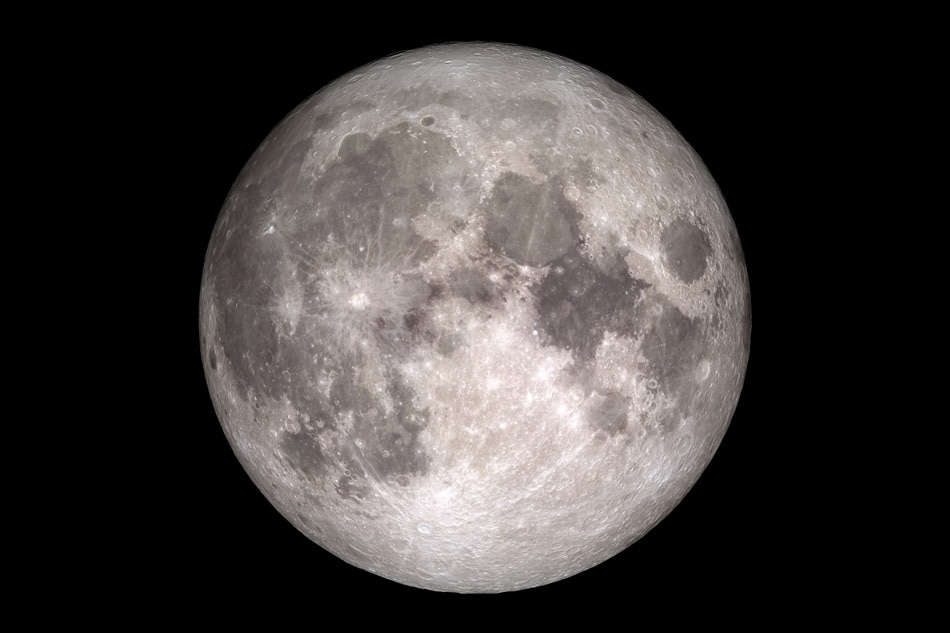
MANILA - The Philippines will experience this year's longest night on December 22, with peak darkness slated around midnight, state weather bureau PAGASA said.
"Philippine nights will be longer than the daytime" as the winter solstice begins, PAGASA said in its annual astronomical diary.
"This marks the time when the sun lies at its farthest point south of the equator," it said.
"It signals the onset of winter in the Northern Hemisphere and summer in the Southern Hemisphere," it said.
Countries that do not have winter season, like the Philippines, will only experience cooler temperatures and longer nights during the winter solstice.
"Philippine nights will be longer than the daytime" as the winter solstice begins, PAGASA said in its annual astronomical diary.
"This marks the time when the sun lies at its farthest point south of the equator," it said.
"It signals the onset of winter in the Northern Hemisphere and summer in the Southern Hemisphere," it said.
Countries that do not have winter season, like the Philippines, will only experience cooler temperatures and longer nights during the winter solstice.
A Complete Travel Guide for Visiting the Philippines for the First Time
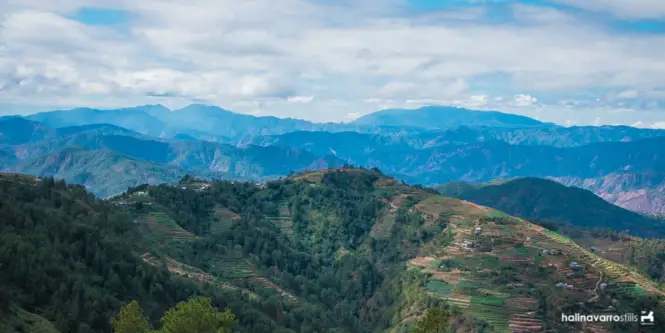
Are you traveling to the Philippines for the first time? Here’s a short Philippines travel guide that covers a little bit of everything you need to know about this archipelago in Southeast Asia, also known as the Pearl of the Orient Seas, including a few personal tips from a local — yours truly!
What you need to know
Currency
The Philippines uses Philippine peso as its currency. Currently, exchange rates are about $1 to P50. This is good news for Western tourists. However, compared to other Southeast Asian countries, you need to be more strategic in budget planning since it almost always requires local flights to transfer from one place to another.
When is the best time to visit the Philippines
As I live here, I can tell you that the weather in the Philippines is just plain crazy. That aside, December to February are the coolest months and experience few rainfalls, so it’s best to book within this period.
March to May comprises the summer months, so you’re guaranteed good weather all throughout, though you also have to deal with summer crowds and higher markups. June to November are the rainy months.
I like traveling during off-season because rates can be haggled down and there are few tourists. In fact, not only once did we explore beaches where there were literally no one else but us! But of course there’s always the risk of getting stranded due to weather disturbances.
How much does it cost to travel around the Philippines
Budget depends on where you’re going and what you’re planning to do. When we travel around the country, it typically costs us anywhere from P700 to P1500 a day (including budget accommodation, food and tours).
How to plan your stay in each province
In general, I suggest staying about 5 days in one province. But then again, it depends. For example, Siquijor and Dumaguete can be explored in a 3-day trip. Palawan has a couple of destinations that deserve at least 5 days each. So in the end it depends on where you’re going and what you plan to do.
To get a good sense of what the Philippines is like, I suggest staying in the country for 3-4 weeks at least. Here’s a sample 3-week itinerary to the Philippines, covering provinces in Luzon and Visayas.
[ Also Read: Things to know before visiting the Philippines ]
Travel tips
Plan your trip ahead and be ready to reserve/online book for accommodations and local flights in advance. Believe me, this will save you a significant amount of money in the long run and will make your trips easier.
Finding places to stay
In our experience, in non-touristy locations, we can simply walk in or do pencil reservation (we simply inform thru text or FB messaging that we will be arriving). This is especially true for small businesses. However, for mainstream tourist attractions, especially during summer, it’s better to properly book ahead to get a spot on budget accommodations such as hotels or homestays.
Booking local flights
Since the Philippines is an archipelagic country, most likely you’ll need to take local flights to go to different provinces. Direct sea or land travel isn’t always an option or may take too long. Local flights can be expensive so what we do is book months in advance (sometimes even a year early) or wait for promos. A ticket from Manila to Puerto Princesa can cost P7000 above if bought on the same day, whereas a promo ticket costs only about P200-1000.
Check for online promos from budget airlines such as Airasia or Cebu Pacific. Websites such as Traveloka also offer good rates for flights and accommodations.
Best tourist attractions in the Philippines
There are 81 provinces in the Philippines, so there’s actually a lot of places you can go to. Being an archipelago made up of 7000+ islands, this country naturally has a lot of great beaches, as well as snorkeling, diving and surfing spots. The most obvious thing you should do here is island hop!
That saying, there are also various mountains, waterfalls and lakes in the country. Provinces far from Manila have retained more of its local culture. You can see farming communities, rice terraces beside roads or on mountains, and residents living in traditional nipa huts.
So with all these options, where do you start exploring?
Main tourist attractions
Most likely, you’ll arrive in the airport of Manila, the country’s capital. From here, you can take a tour in Manila or proceed to connecting flights to other provinces. Manila has a bit of cultural sights, but because of its horrendous traffic and pollution, most people suggest — as I would — to spend the rest of your time in other provinces in the country.
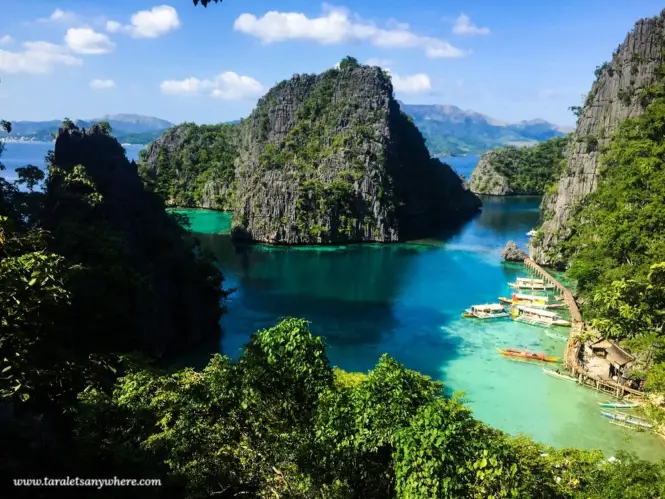
If you’re going to visit the Philippines, you shouldn’t miss Palawan (El Nido, Coron, Puerto Princesa, Port Barton and a few low-key places). It’s a must-visit for its exotic lagoons, beaches and lakes as well as limestone rock formations. If you’re on a limited schedule, I personally recommend choosing Coron over the others.
Another must-see is Siargao in Surigao del Norte, for its virgin islands and lagoons. If you want to see greens and lush islets, head over here. As of this update (2017), we’d been here twice and it still remains as splendid as our first visit. Siargao is also known as the Surfing Capital of the Philippines and is often visited by surfers from all over the world.
Also, while you’re in Siargao, don’t forget to drop by Bucas Grande and see its amazing waterway jungle.
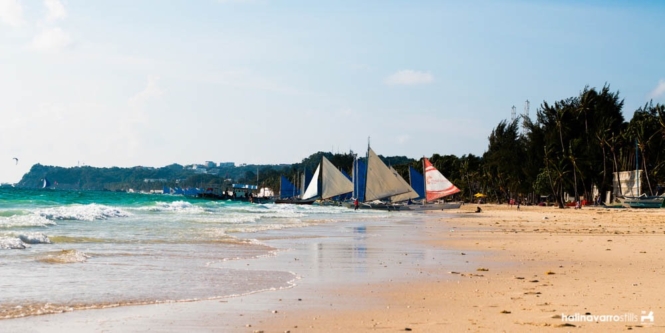
Boracay is a world-class island. Pretty much like other famous places, Boracay is a love-it or hate-it type. Boracay has beautiful tropical beaches and is considered a party summer destination. Go here if you’re the type who are into like pub crawls and nightlife. To be fair though, it also has many watersport activities that are not easily available in other places, from snorkeling and diving to unusual ones such as mermaid swimming lessons.
Bohol is a classic tourist spot. It features the famous Chocolate Hills you always see in postcards and is home to the endemic tarsier (Carmen, Bohol). It also has some amazing quiet beaches (Panglao, Bohol).
Bohol’s nearby province Cebu is also a good choice. You can do canyoneering and visit waterfalls in Oslob, beach bum in Bantayan Island, and dive & snorkel in Malaspacua and Moalboal where you can see various wildlife such as sardine run, thresher sharks and more.
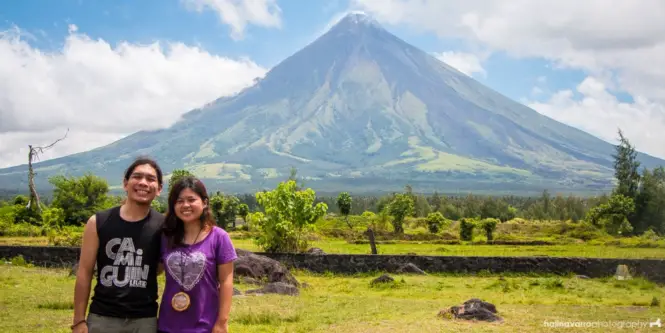
Albay in the Bicol province has the world’s perfect-shaped volcano, Mount Mayon. You can stay in a luxurious resort overlooking the mountain or do other activities such as ATV rides around the mountain.
Most foreign travelers plan their Philippine travel around these provinces, but I encourage you to also explore some off-the-beaten destinations in the Philippines. As a developing country, there’s still much more to see than listed here. (If you’d been a long-time reader of our blog, you’ll know that we mostly blog about off-beat destinations in the country! So go ahead and explore.)
Off-the-beaten destinations
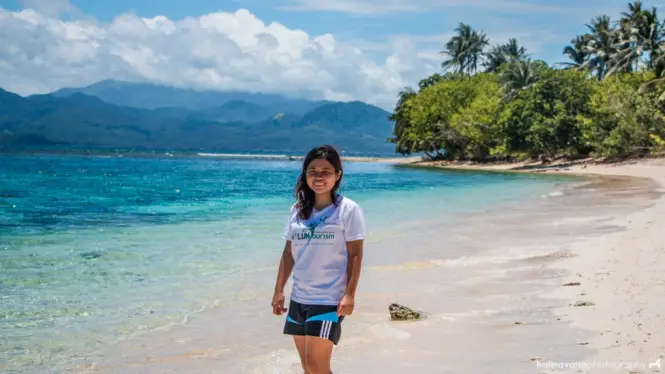
Here’s a secret: there’s a lot of off-beat locations in the Philippines… but at the same time, local tourism is also growing that it may look very different a few years from now. The challenge is to know where to look and having the resources and effort to actually get there.
That aside, here are some of our recommendations for locations that are less touristy, but with at least basic infrastructure for travelers.
My favorites are Sorsogon and Catanduanes. I am especially endeared with the first, and here you’ll find a lot of activities including exploring pinkish-sand beaches and a marine sanctuary, kayaking in the lake of Mount Bulusan, surfing in Gubat and many others.
Siquijor and Negros Oriental are other good options for some quiet, quality time. I know that a lot of foreign tourists like Siquijor because of its many waterfalls and general quiet tourist scene.
Aside from these, Camiguin in the south also has wonderful features — hot springs, falls and islands. It’s visited less and again seems to be a favorite of laid-back foreign travelers.
There are also areas in Palawan that are, as of this writing, undeveloped and visited less. There’s Linapacan Island (dubbed as having the world’s clearest waters by a website), Balabac islands in the southern tip of the island province and Port Barton.
Our personal suggestions
As for my personal recommendations, it would be Palawan (Coron in particular shouldn’t be missed), Sorsogon, Catanduanes, Surigao del Norte (specifically Siargao and Bucas Grande) and Negros Oriental (specifically Apo Island). If you like adventure, you should definitely include Cebu in your visit.
I’m also endeared to Dinagat Islands, with its raw islands that might be comparable, if not better, than those in Palawan.
Unique sights and cultural experiences
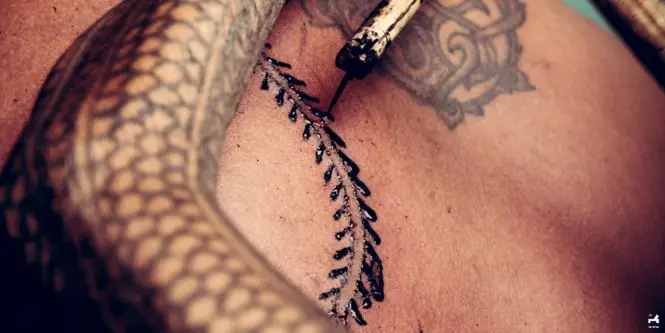
Here’s a short list of places with some unique culturally experiences or sights you can find in the Philippines. This is especially helpful if you’re the type who wants more than island hopping.
- See the rice terraces in Banaue or, even better, Batad; Maligcong also has majestic rice terraces
- Meet the oldest mambabatok and have a traditional tribal tattoo in Kalinga
- Enjoy a kawa hot bath in Tibiao, Antique
- Visit historic churches in Bohol
- Immerse in the T’boli community residing in Lake Holon, South Cotabato
- See the old stone houses and preserved culture of the Ivatan tribe in Batanes
For another resource on what to do and where to go, read this article by Guide to the Philippines.
What Filipino foods to try
Filipino food isn’t the most popular in Southeast Asia, but we do have remarkable dishes as well.
Some must-try’s include sinigang (soup with sampaloc or other sour fruit), sisig (grilled pork face), kare-kare (stew with peanut sauce), dinuguan (soup with pig’s blood), kilawin (fresh fish marinated in vinegar) and laing (gabi leaves in coconut milk).
For desserts, halo-halo is a must try.
For the street food, try kwek-kwek, various inihaw (grilled food such as chicken intenstine) or the infamous balut (boiled duck embryo). Here’s a sample video of Filipino street food found in Cebu.
[ Also Read: Must-try foods in the Philippines ]
Each province has its own specialties as well, so don’t forget to ask locals for recommendations.
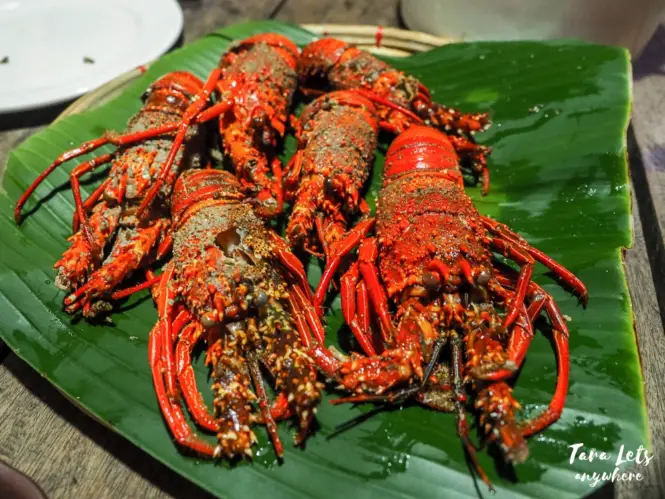
Whether you’re a fan of any of these or not, here’s one thing you need to try: buying seafood! This is one of the things I personally love about going to provinces out of Manila. Crabs, shrimps, squid and fishes are cheap in seaside communities. You can buy fresh catch from fishermen themselves early in the morning or in the market. For instance, lobsters can go as cheap as P50 each ($1) and scallops for P1 each ($0.05).
If you’re staying in the city though, you can still feast on seafood by going to seafood dampa.
Hi there! I’m Katherine Cortes. I’m a writer, editor and software engineer. Along with my boyfriend Hali, I like traveling to off-beaten locations, beaches, beaches and beaches and having nice staycations where I can read and daydream.
Welcome to my blog, Tara Lets Anywhere! Tara lets is how you say “let’s go” in Filipino.
Tuesday, December 17, 2019
Davao De Oro recognizes heroism among volunteers in the "Bayanihan Sa Paaralan 2019"
Davao De Oro--- Davao De Oro Province celebrates “Volunteer’s Holiday” on December 13, 2019 at the Magnaga Beach Resort, Pantukan, Davao De Oro. With more or less 1,200 volunteers, it was a fun and memorable day as the provincial government spearheaded a day of thanksgiving for their selfless commitment as they give their time and effort to help those children have better quality of education through the provision of a classroom building.
This follows with the success of the Bayanihan sa Paaralan 2019 on five different sites: Danawan in Brgy. Manurigao, New Bataan, Side-4 in Brgy. Mangayon, Compostela; Sitio Sapang-lubog in Pantukan; Sitio-Bongloy in Pagsabangan and Panansalan in Compostela. Not only a 1 unit, 2 classroom buildings were built but also a teachers’ cottage, Kusina ng Kalinga (kitchen) and a Gulayan sa Paaralan (vegetable garden) were provided during the week-long build.
“Ni-volunteer gyud mi kay ang tumong ug tinguha nga ang among mga anak maka dawat gyud ug saktong edukasyon. Nangunay gyud mi ug lihok ug nagpasalamat pod mi sa uban ng taga LGU ug lungsod nga nagvolunteer ug nitabang sa amuang dapit.” said Margonio Jacinto, the purok-chairman who donated the space in Panansalan where classrooms and teacher’s cottage were built.
“No wonder sa tanan natung kalisod, challenges sa kinabuhi, dili lang sa atung sarili kung dili sa atung kumunidad maskin unsa ka bug-at nga mga problema, ang mga taga Davao De Oro makalampos ug makabarog gyud tungod kana sa paggawas sa kultura sa bayanihan sa atung mga sarili.” said Governor Jayvee Tyron Uy.
The provincial government of Davao De Oro initiated the celebration for all volunteers who served as “living heroes” paving the way to rack up an aspiration. Each team received a cash prize worth Php 30, 000 from the provincial government as a reward for a job well done.
“We will not stop nga maghimo ug proyekto ug programa pinaagi sa Bayanihan. Through the Bayanihan, we can do everything. Kahit gaano kahirap, kaya nating abutin basta’t nagkakaisa tayo” said Senior Board Member Arturo “Chiongkee” Uy, who has since been look up to as the father of the Bayanihan in the province. He was the one who steered “bayanihan” during his stint as the governor in the later Compostela Valley.
(Jasteen Abella, ID Davao DE Oro)
Monday, December 16, 2019
Tote bei Erdbeben auf Philippinen-Insel Mindanao
Bei einer Erdbebenserie auf der philippinischen Insel Mindanao sind mindestens vier Menschen ums Leben gekommen. Das heftigste Beben hatte die Stärke 6,8 und ereignete sich in der Davao-Region. Anschließend kam es zu etlichen Nachbeben. Im Ort Padada stürzte ein mehrstöckiges Supermarkt-Gebäude ein. Dabei starben nach Feuerwehr-Angaben mindestens drei Menschen. Eine unbekannte Zahl von Menschen wurde noch in den Trümmern vermutet. In Matanao starb nach Angaben von Bürgermeister Vincent Fernandez ein sechsjähriges Mädchen, als eine Betonwand umstürzte.
(C) DW
Friday, December 13, 2019
Climate Change and Major Emitters
My column in Mindanao Daily, BusinessWeek Mindanao, Cagayan de Oro Times
By KLAUS DORING
December 12, 2019
WHILE all of us already experience what climate change is all about, delegates from developing countries have reacted angrily to what they see as attempts to block progress at the COP25 meeting in Madrid. Yes, I get already big problems remaining patient while watching live stream news from Madrid.
One negotiator told the BBC that the talks had failed to find agreement on a range of issues because of the blocking actions of some large emitters. Carlos Fuller from Belize said that Brazil, Saudi Arabia, India and China were "part of the problem".
Other observers said there was a serious risk of failure at the talks.
Daily headlines let me feel bad. Greenland ice melt 'is accelerating'. Amazon oil boom under fire at UN climate talks. And so on and so on ... I am writing this while living in the Philippines - a country hit most by climate change.
Ministers from all over the world have arrived in Madrid for the high-end negotiations that will determine the final outcome of this conference. Despite a huge climate demonstration on the streets of the Spanish capital last Friday, hopes of an ambitious declaration at COP25 have smacked straight into the realities of politics and entrenched positions.
I am afraid, also "Madrid" won't help anymore. There's an effort right now to block the words 'climate urgency' in text from Brazil and Saudi Arabia, saying we haven't used these words before in the UN, so we can't use them now," said Jennifer Morgan, executive director of Greenpeace International.
"This gap between what's happening on the outside and what's happening in the science, and this 'UN speak' that won't react and drive something is very frustrating."
One issue that has caused a good deal of anger are the attempts by Brazil, China, India and Saudi Arabia to have the actions that were due to be completed before 2020 by richer nations, re-examined as part of the overall deal here in Madrid.
Distressing ... .
Tuesday, December 10, 2019
97% voted for YES to DAVAO DE ORO
Nabunturan, Davao de Oro--- It's a resounding 97% in favor of "yes" as Compostela Valley Province is now officially renamed to Davao de Oro with a total of 174,442 voting for YES.
“The making of history does not end here. This is only the beginning. We will work on making Davao de Oro true to its name, a province where people come, people live, and people prosper. We are Davao de Oro and this is our promise,” Governor Jayvee Tyron L. Uy said following the declaration.
Governor Uy expressed his gratitude to all who took part in the making of history in the province as he thanked Congressman Manuel E. Zamora and the late Congressman Prospero Amatong who first filed the Davao de Oro bill fifteen years ago.
He also thanked the former Congressman of District -I and now Vice Governor Maricar Zamora together with District-II Congressman Ruwel Peter Gonzaga who passionately pursued the proposition three years ago and did the painstaking work of lobbying it to the House of Representatives with the counterparts of Senator Juan Miguel Zubiri and Senator Sonny Angara for doing the same in the halls of the Senate.
“We have nothing but gratitude to all who helped us in the campaign, to all local government officials, employees of the Provincial Government and everyone who helped us get the message of this renaming across, to the security sector, teachers and election officers who worked hard to give us a seamless plebiscite and most especially, to the people of Davao de Oro to whom this change is inspired, we thank them for going out last December 7 plebiscite and casting your vote, no matter what that vote is,” said Governor Uy.
He added that, “our twenty years as Compostela Valley Province gave us enduring lessons- of resilience, convergence, cooperation and collective responsibility. Certainly, we will bring those ideals as Davao de Oro.”
With its renaming, “Davao de Oro” aims to bring in more investments in the province since Davao Region is a bustling region with competitive business environment and a relatively peaceful province. De Oro refers to the rich/vast gold deposits found in the province were 10 of its 11 towns have gold deposits.
The final and official result was formally announced by the head of the Provincial Board of Canvassers (PBOC), COMELEC Regional Director Remlane Tambuang on December 8, 2019 at past 10 in the evening. The total result of the voters turn-out reached 44% or 179,953 casted votes with 5,020 who voted for “No.”
(Rey Antibo, ID Comval)
Photo Caption:
FB_IMG
Compostela Valley Province is now officialy called Davao de Oro as 174,442 persons voted YES to rename the province and only 5,020 voted NO or against the renaming. Out of 410,261 registered voters in the province, 179,953 casted their votes or a 43. 86 percent turn-out.(Provincial Photo)
Monday, December 9, 2019
Davao de Oro celebrates “Thanksgiving Day “
Davao de Oro Province (Dec. 8, 2019, 11 AM)--- Grateful for all the triumphs received by the golden province for the entire year of 2019, Davao de Oro celebrates its annual interfaith “Provincial Thanksgiving Day” held at the Provincial Capitol Grounds on December 8, 2019.
The celebration came a day after the plebiscite was held for the renaming of Compostela Valley province to Davao de Oro. As of this writing, election returns have yet to be completed and submitted to the Provincial Plebiscite Board of Canvassers (PPBOC) at the New SP Session Hall, Provincial Capitol in Nabunturan.
The “Thanksgiving Day” aims to nurture universal values to all constituents to direct the institutionalization of the spiritual development as well as values restoration program implementation from provincial down to the barangay levels. The celebration was attended by all LGU officials from the 11 municipalities, different barangay officials together with the stakeholders in the National Government Agencies.
With the theme “Through him then, let us continually offer up a sacrifice of praise to God that is the fruit of lips that give thanks to his name” Davaweños, with different religions were united as one during the event.
The Thanksgiving Day also gave way to help identified beneficiaries of calamities and crisis affected individuals through the offerings given by all attendees during the event. “For the last 21 years, more or less 22 years, maskin unsa man ang muabot nga delubyo o problema sa atung probinsya nga tan-aw nato lisod kaayo sulbaron pero ato gihapong na solusyunan as a province mao na nga diha nato makita ang true meaning sa atuang ngalan sa probinsya isip Davao De Oro.” said Governor Jayvee Tyron L. Uy.
(Jasteen P. Abella, ID COMVAL)
Subscribe to:
Posts (Atom)








